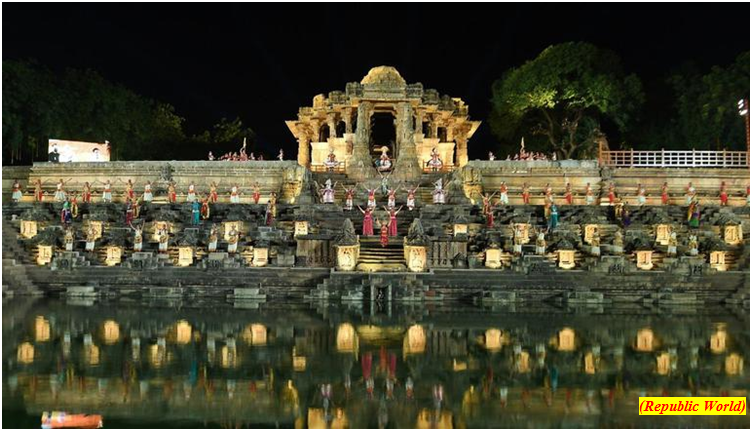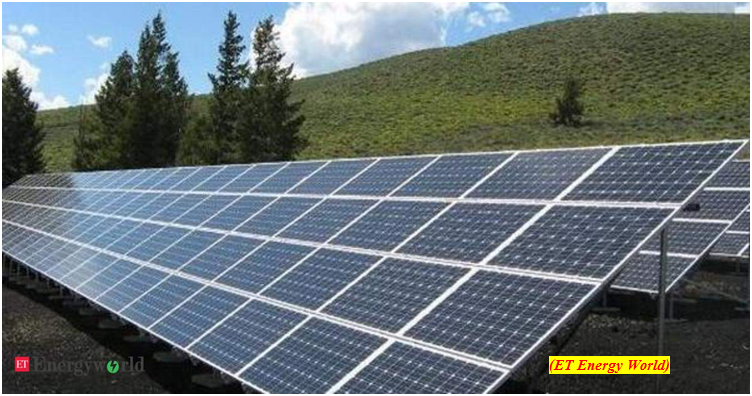Three more sites added to tentative list of UNESCO (GS Paper 3, Environment)

Why in news?
- Recently, Gujarat’s Vadnagar town, the iconic Sun Temple at Modhera, and the rock cut sculptures of Unakoti in Tripura have been added to the tentative list of UNCESO World Heritage Sites.
- With this, India now has 52 sites on UNESCO Tentative List.
New editions to tentative list:
- The Sun Temple at Modhera which is dedicated to the sun god, is the earliest of such temples which set trends in architectural and decorative details, representing the Solanki style at its best.
Vadnagar:
- Vadnagar is a municipality in Mehsana district of Gujarat. A multi-layered historic town, Vadnagar has a recorded past stretching back to nearly 8th century BC.
- The town still retains a large number of historic buildings that are primarily religious and residential in nature.
Unakoti:
- Unakoti is an ancient holy place associated with Shaiva worship.
- The site is a massive gallery set in a forested area displaying a number of towering low-relief images in a unique style, making it a masterpiece of human creative genius.
What is tentative list?
- The UNESCO tentative list is an “inventory of those properties which each State Party intends to consider for nomination”.
- As per Operational Guidelines, 2019 of UNESCO, it is mandatory to put any monument/site on the Tentative List (TL) for one year before it is considered for the final nomination dossier.
- Once the nomination is done, it is sent to the World Heritage Centre (WHC).
United Nations extends Congo peacekeeping force with an eye to its exit
(GS Paper 2, International Organisation)
Why in news?
- The Security Council has voted unanimously to extend the UN peacekeeping mission in Congo with an eye to its eventual exit.
- The separate resolutions were approved amid worsening security in Congo's mineral-rich east, a region rife with rebel groups and an upsurge in violence and civilian killings that has uprooted tens of thousands of its inhabitants.

Highlights of the resolution:
- The resolution extending the U.N. peacekeeping force known as MONUSCO until Dec. 20, 2023, strongly condemns all domestic and foreign armed groups operating in the country and demands they immediately cease all violence and destabilizing actions and the illegal exploitation and trafficking of natural resources.
- It also demands the immediate withdrawal of M23 rebels, who have been fighting a coalition of armed civilian protection militias in the east for more than a year, as agreed at a mini-summit in the Angolan capital Luanda in late November and endorsed by the African Union.
- It also expresses concern about reported links between Uganda-based Allied Democratic Forces rebels and terrorist networks in eastern Congo.
MONUSCO mission:
- Congo continues to suffer from recurring and evolving cycles of conflict and persistent violence by foreign and domestic armed groups, which exacerbate a deeply concerning security, human rights and humanitarian crisis, as well as inter-communal and militia violence in areas of the country.
- MONUSCO's mission is primarily to protect civilians threatened by violence, secondly to disarm, demobilize and reintegrate combatants, and thirdly to provide strategic and technical advice on reforming Congo's security sector.
IIT Roorkee announces development of low-cost solar cells by researchers
(GS Paper 3, Science and Tech)
Why in news?
- Recently, Indian Institute of Technology (IIT) Roorkee announced that its researchers have successfully developed high-quality, efficient, and low-cost perovskite solar cells.

Perovskite solar cells:
- Perovskite solar cells are thin-film devices built with layers of materials, either printed or coated from liquid inks or vacuum-deposited.
- Perovskite solar cells have demonstrated competitive power conversion efficiencies with potential for higher performance, but their stability is limited compared to leading alternatives.
- The main aim is to optimise the efficiency and to reduce the cost of manufacturing for Perovskite solar Cells as much as possible.
Outcome:
- The modified perovskite solar cell leads to the optimum phase distribution, enlarged grain size, and improved crystallinity.
- The power conversion efficiency achieved for the developed perovskite solar cells is 17.05 per cent.
Way Forward:
- This technological development would boost self-reliance in India in the field of renewable energy.
- Moreover, this finding will offer new opportunities and the development of highly efficient perovskite solar cells with long-term operational stability, said the institute.




